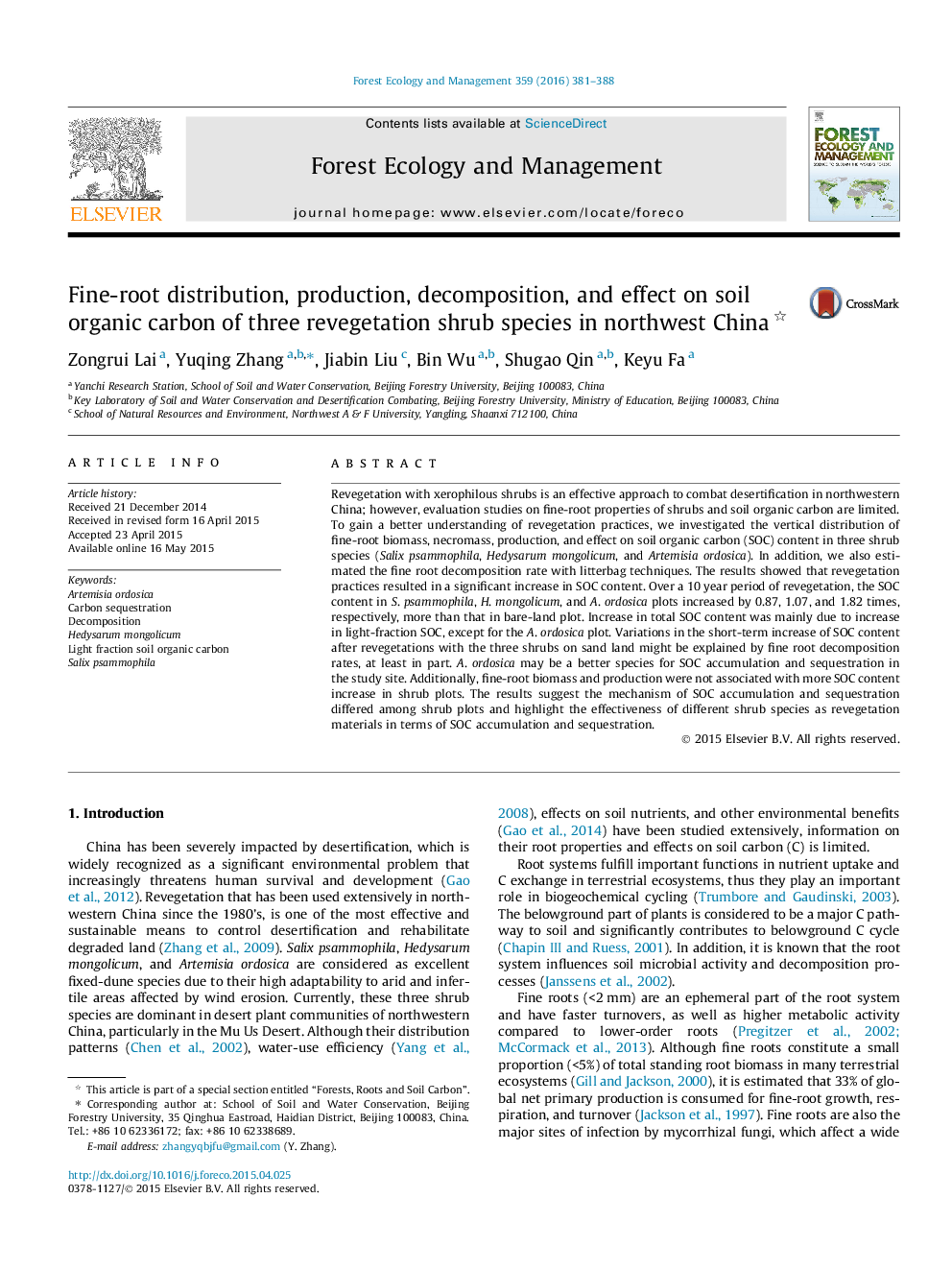| Article ID | Journal | Published Year | Pages | File Type |
|---|---|---|---|---|
| 6542608 | Forest Ecology and Management | 2016 | 8 Pages |
Abstract
Revegetation with xerophilous shrubs is an effective approach to combat desertification in northwestern China; however, evaluation studies on fine-root properties of shrubs and soil organic carbon are limited. To gain a better understanding of revegetation practices, we investigated the vertical distribution of fine-root biomass, necromass, production, and effect on soil organic carbon (SOC) content in three shrub species (Salix psammophila, Hedysarum mongolicum, and Artemisia ordosica). In addition, we also estimated the fine root decomposition rate with litterbag techniques. The results showed that revegetation practices resulted in a significant increase in SOC content. Over a 10Â year period of revegetation, the SOC content in S. psammophila, H. mongolicum, and A. ordosica plots increased by 0.87, 1.07, and 1.82 times, respectively, more than that in bare-land plot. Increase in total SOC content was mainly due to increase in light-fraction SOC, except for the A. ordosica plot. Variations in the short-term increase of SOC content after revegetations with the three shrubs on sand land might be explained by fine root decomposition rates, at least in part. A. ordosica may be a better species for SOC accumulation and sequestration in the study site. Additionally, fine-root biomass and production were not associated with more SOC content increase in shrub plots. The results suggest the mechanism of SOC accumulation and sequestration differed among shrub plots and highlight the effectiveness of different shrub species as revegetation materials in terms of SOC accumulation and sequestration.
Related Topics
Life Sciences
Agricultural and Biological Sciences
Ecology, Evolution, Behavior and Systematics
Authors
Zongrui Lai, Yuqing Zhang, Jiabin Liu, Bin Wu, Shugao Qin, Keyu Fa,
